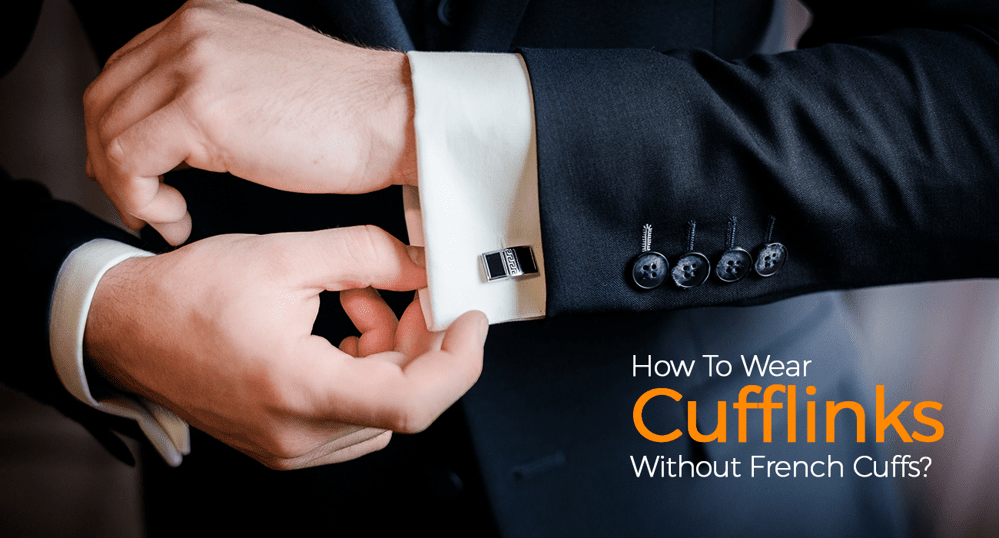
Cufflinks have long been thought of as a practical button replacement for the perplexing French cuff shirt, which is only worn in casual settings. However, these once aristocratic pieces of hardware are now readily accessible to the common man.
There's a cufflink for every occasion, whether it's playful and bold or traditional and understated. More specifically, there is a cufflink for every occasion.
What Do Cufflink Shirts Get Their Name From?
So, how can you put cufflinks on? Is it possible to wear cufflinks with every dress shirt? No, it's not true. To begin, you'll need to locate a French cuff shirt. Although French cuffs were once only seen on a classic white tuxedo shirt, they are now seen on almost every type of button-down.
Even better, any tailor can easily (and affordably) convert the cuffs on your favorite shirt to a French cuff, allowing you to wear cufflinks without having to change your wardrobe.
Without French Cuffs, How to Wear Cufflinks
If you want, you can wear it with a normal shirt. If you're envisioning a formal stiff collar for the workplace or a more casual-leaning button-down, the result is the same: This is how to wear cufflinks without French cuffs: remove the buttons and, preferably, make a double cuff.
Many people have their buttonholes out, their cuffs reversed, and a new opening for their cufflinks created by a tailor. Alternatively, if you know how to sew, you could:
- Choose a shirt with sleeves that are longer than normal. The ends of the cuff should always touch your normal wrist if you fold it up once.
- Draw a line directly under the current button with a marker or pen. The current buttonhole should be aligned with this.
- Sew a backstitch around the edges of each thread, never across. When you're done, it should look rectangular.
- Cut each traced buttonhole through. In addition to the original one, your cuffs can now have three additional buttonholes.
- Consider re-stitching the region to prevent further fraying.
What Cufflinks Would You Recommend for Me?
It's easy to become overwhelmed when faced with a sea of these accessories — there are so many options! What should I be on the lookout for? How can I tell if it's low-quality or high-quality? What's the best way to wear these cufflinks? Don't worry, no matter what your budget is, you can start small and work your way up before you're ready to branch out.
To begin, tie a series of silk knots. These are thin, lightweight fabric cufflinks that are typically sold in sets of two or three for about $20. They add a splash of color and are incredibly simple to put on.
After that, a pair of heirloom-quality cufflinks. Depending on the material you choose, it will cost anything from $75 to several thousand dollars, depending on your budget.
If you opt for a monogrammed set or a simple beveled shape, the trick to wearing cufflinks with style is to choose a pair made of fine metal, such as gold or silver, rather than the tarnish-prone base metal. If you want to pass them on through the years, this means they will last.
How to Wear Them?
A valet may have fastened a man's cufflinks years before. That responsibility has been squarely on the shoulders of the wearer for the past few decades. You can't just add a pair before putting your arm through the sleeve of the shirt; if you do, the fit will be too loose.
On a practical level, the solution to "how to wear cufflinks" is to pair them with French cuffs – or, more precisely, shirts with a double, folded-over cuff that does not have buttons. The cufflink is fixed and remains in place since it passes through all sets of holes – four in this case – and is fastened on the other end with a toggle. Make sure the post is facing outwards.
Finally, purchase a pair of cufflinks solely for amusement. If you never outgrew your superhero phase or still enjoy playing with LEGOS, go ahead and flaunt your personality on your wrist. They should be exclusive to you if they pop out of a sport coat sleeve or start a conversation.


